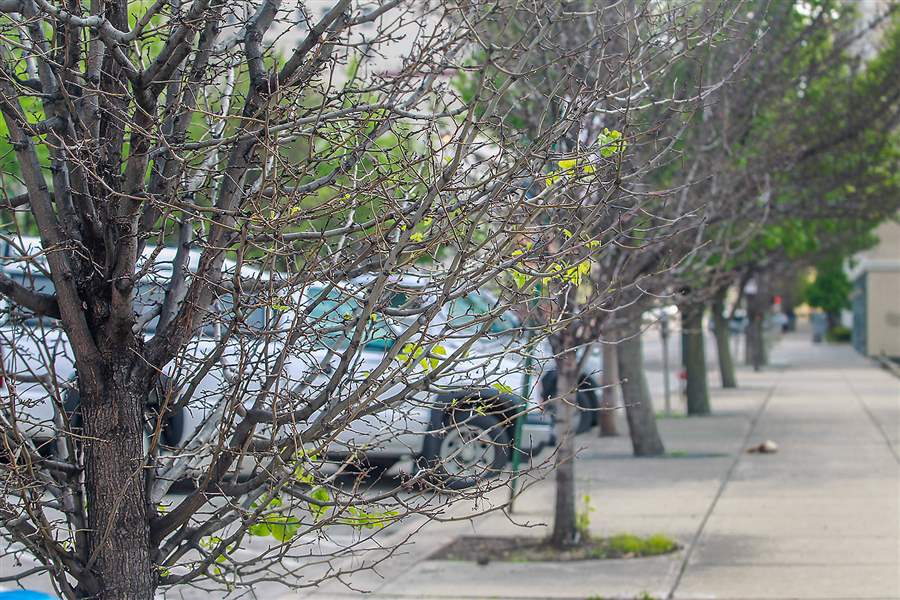
STREETSCAPING HITS SNAG
Trees killed by winter salt could be costly to replace
5/21/2014
Trees with dead limbs line Superior Street in downtown Toledo.
THE BLADE/ISAAC HALE
Buy This Image

Dennis Garvin, city parks and recreation director, stands next to a dead tree on Superior Street in Toledo. City arborists have documented 147 trees in the downtown area that are dead or dying.
First, it was potholes.
Now it’s trees.
City of Toledo arborists have documented 147 trees in the downtown area that are dead or dying, victims of the city’s heavy — though largely unavoidable — use of road salt this winter.
Officials view it as another one of the hidden costs of this winter’s relentless barrage of snow, ice, and sub-zero temperatures.
“It snowed literally about every third day from mid-December through March. We were constantly putting salt on streets,” Dennis Garvin, the city’s parks, recreation and forestry commissioner, said.
PHOTO GALLERY: Click here to view
Although city officials have said they will re-examine how much salt they used this winter, they said there aren’t many options when it comes to keeping the roads clear for public safety.
Mayor D. Michael Collins said in a telephone interview from Boston the city must do what it takes to replace the 147 dead or dying trees.
“We cannot lose the momentum and synergy that is going on downtown. If anything, we need to increase it,” he said.

Trees with dead limbs line Superior Street in downtown Toledo.
Most of the affected trees are in the main part of downtown. Those in the Warehouse District are in good shape, Mr. Garvin said.
Each replacement tree, on average, will cost about $100. That translates to just less than $15,000.
But Mr. Garvin said the real cost will be excavating and disposing of the salty soil, and replacing it with fresh, clean dirt.
That will add thousands of dollars.
Officials won’t replant in salty soil, or the replacement trees will just die.
“We salted the Earth too much. That’s about all it comes down to,” Mr. Garvin said.
The 147 dead or dying trees are among about 800 trees planted at various times to beautify streets, roads, and avenues. They’re mostly smaller trees that are used for streetscaping, a term for describing landscaping along city-owned street right of ways.
They are grown in man-made tree wells in the sidewalks.
A combination of maples, pear trees, ginko trees, and bald cypress trees; they typically have a relatively short lifespan, anyway — about 15 years — because there isn’t enough soil in the tree wells for their roots to spread out, Mr. Garvin said.
Lisa Ward, a Collins administration spokesman, said the situation is a classic catch-22.
“We had to do what we had to do for public safety,” she said.
The city is putting out a request for proposals for the soil work.
Once it gets estimates back, administration officials will take a proposal to city council.
Under a best-case scenario, replanting could begin this fall, Mr. Garvin said.
Contact Tom Henry at: thenry@theblade.com or 419-724-6079.